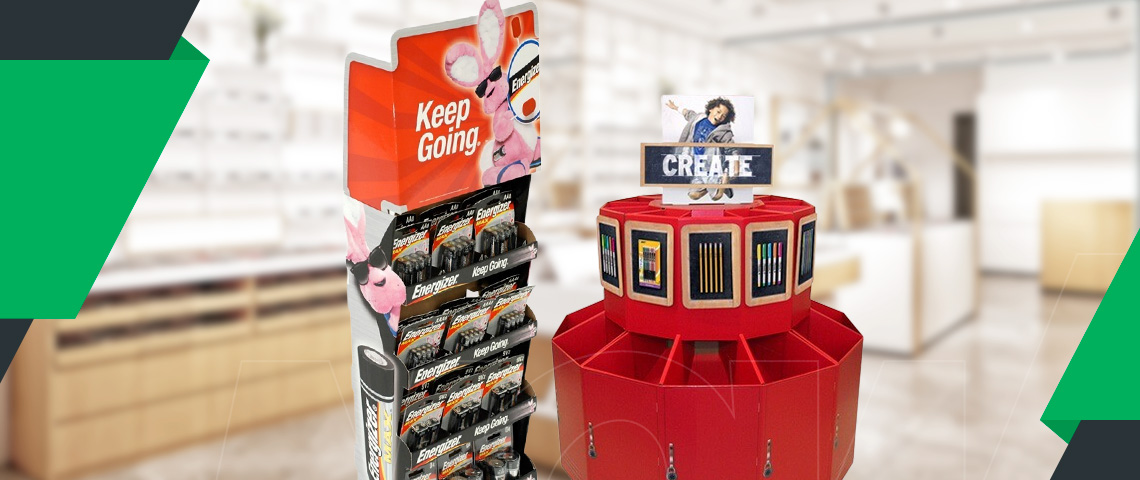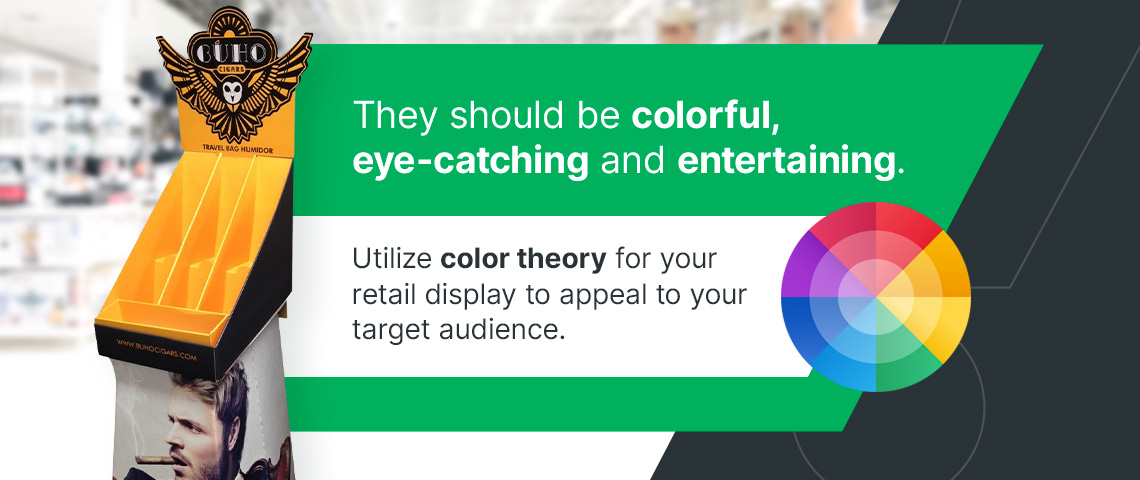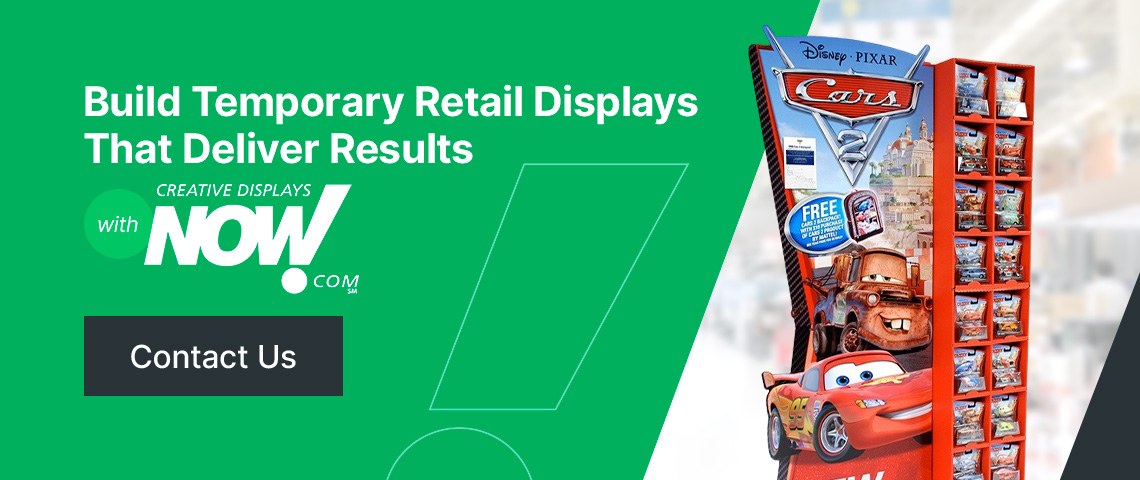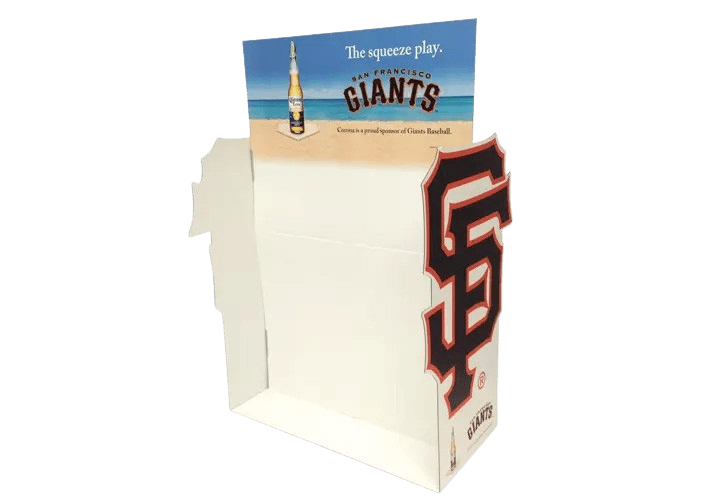Temporary retail displays are designed to be offered in stores for a limited time, typically up to several weeks. They’re intended to promote campaigns like new product launches, seasonal items and limited-edition inventory. Conversely, permanent retail displays are used for products with longer shelf lives. They’re ideal for showcasing long-term, high-ticket and staple items.
Temporary displays are a quick and effective way to promote a new product or one relevant to the season or trends. They’re a practical marketing strategy for helping customers notice your products and brand and increase purchases. Here are creative tips for making retail displays that work.
Stick With the Trends
It can be tempting to create custom temporary displays to promote your slower-moving products. However, this likely won’t generate substantial cash flow. Impulse appeal and immediate relevancy are two key factors that make these marketing strategies effective.
That’s not to say you can’t push older products out with temporary retail displays, but you have to be astute. Consider the customer’s current needs. For instance, in the summer, it makes more sense to set up a display for popsicles than in the freezing winter months. You want to play on an idea the customer relates to.
Creative Displays Now! did a similar setup for one of Oliver Winery & Vineyards’ products. We created a display that represented the amazing summer day people could have with a bottle of our client’s sangria. Our eye-catching design with salsa and chips displayed on top played on the trends for summer and created a desired image for the season.
Aside from seasonal trends, social media is a good place to look for fashion, food and art trends. These trends are immediately relevant and draw customers in to interact with them.
Use Bold Designs
The main benefit of investing in a retail display is drawing attention to your product. Studies show that impulse shopping accounts for around 62% of supermarket sales. The display aims to create the impulsive need to attain your product using a powerful message and bold designs.
Temporary retail displays aren’t meant to blend in. They should be colorful, eye-catching and entertaining. Utilize color theory for your retail display to appeal to your target audience. For instance, impulse shoppers might be more attracted to urgent colors like red, orange and royal blue. When we worked with Búho Cigars, we created an elegant and masculine design. We used black and bold yellow to create an eye-catching effect.
Select the Ideal Size and Location
The size of your display matters. It informs the customer of your product’s opportunities and showcases the urgency of purchasing it.
End cap displays cover the entire end of a shelf. Due to their substantial size, they take up a premium store position and are perfect for showcasing a range of products. They feed on the customer’s sense of urgency and are hard to miss.
Aisle displays are typically medium- to small-sized. They are situated in the customer’s path, offering your items excellent visibility. If your products aren’t popular yet or have low visibility, these displays can draw attention to them.
Your temporary retail display can be placed at a point of purchase (POP), anywhere in the store or at a point of sale (POS) in the checkout area. If your product qualifies as an impulse buy, POS counter displays are highly effective. They’re typically smaller than the others but can be made wider for Product Displayed Quickly (PDQ).
Create Interactive Displays
Colorful and beautiful displays are great. Customers can appreciate their appeal, but is it enough?
Interactive displays offer several benefits compared to displays that are just nice to look at. They can increase the time the customer spends on your display, which familiarizes them with your brand. By interacting with your display, customers can form a connection with your brand, and your products can make a lasting first impression.
In the current digital climate, instant gratification is the name of the game. But how do we transfer this to in-store displays?
Interactive displays satisfy the need for instant gratification by allowing customers to access information or experience some part of your product immediately. They offer customers instantaneous insights, rewards or experiences with your brand, which persuades them to make a purchase. Here are two of the best ways to incorporate interactive features into your temporary retail display:
- Product testers: While this isn’t a new marketing idea, testers are always an effective display method. They allow customers to try your product and dispel any doubts they may have.
- QR codes: Customers simply scan a QR code on your display to enter a competition or learn more about your product. This helps them make more informed decisions and discover how amazing your product is.
Make the Message Concise and Visible
Customers who are busy with their shopping only want to know one thing about your product — why they should buy it. Ensure your message is clear. Less confusion makes it easier to purchase.
A good rule of thumb is to keep the main message at eye level. While it may look better at the bottom or middle, it’s best to place it where your customer won’t have to search around to find it. The most important message is why people should buy your product, such as to make the most of their summer.
Other less important information can be outside of eye level. Customers should be able to catch a glimpse of your display and know what it’s about instead of spending time trying to figure it out.
When we worked with Hy-Vee on the Free Seasons Magazine, we stuck with a simple display and put the word “FREE” on the front of the display in bold writing. This made the message clear that Hy-Vee was gifting the magazines. We also used three rows at different heights to reach varying eye levels and ensure customers of all heights could reach the product.
Build an Easy-To-Use Display
Temporary retail displays shouldn’t just be beautiful — they must also be easy to use. They should provide enough room to comfortably hold your products and maintain their shape. People should be able to pick your products off the display easily.
If customers have to twist or maneuver the product to get it out, they may not want to interact with the display.
Create an open-top design that allows customers to grab a product off the display without anything getting in the way. When Creative Displays Now! designed a display for Sunwarrior, we ensured the protein bars were easy to grab off the top or bottom layer. Our design included more than enough space between the lips so they wouldn’t get in the way of the products.
Build Temporary Retail Displays That Deliver Results With Creative Displays Now!
Temporary retail displays allow customers to engage with your brand and persuade them to make a purchase. Creative Displays Now! has more than 60 years of experience in the displays and packaging industry with a primary focus on temporary cardboard displays.
Our primary material is 100% recyclable corrugated cardboard, and we value sustainable displays. We understand major retailers’ requirements and are enthusiastic about using our expertise to give your products the platform they deserve. We’re passionate about making your product stand out from the rest using our keen eye for design and messaging.
View our clients’ success stories and feel free to contact us for your customized temporary retail displays.





